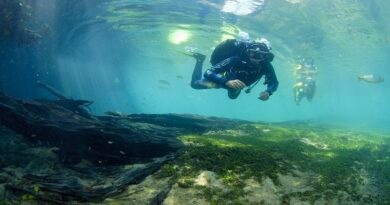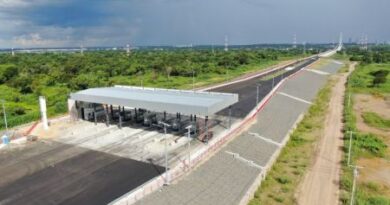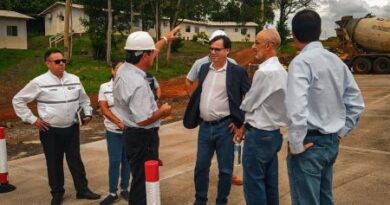Bioceanic Route advances and may change Mato Grosso do Sul’s reality

Construction work on the Bioceanic Route bridge over the Paraguay River in Porto Murtinho
An old and ambitious dream of Mato Grosso do Sul and also of the Brazilian government is becoming reality in the region of Porto Murtinho, a municipality 437 kilometers from Campo Grande. With investments exceeding R$ 466 million, the Bioceanic Route, also called the Bioceanic Road Corridor, is out of speculation and today the works are advancing in the construction of the international bridge over the Paraguay River, which will connect Porto Murtinho to Carmelo Peralta, in Paraguay. Among the projects, the most advanced is the Docas Fluvial de Murtinho, already authorized by Antaq (National Agency of Waterway Transport). The new corridor will connect the Atlantic Ocean to the Pacific Ocean, connecting Brazil, Paraguay, Argentina, and Chile.
Translated with www.DeepL.com/Translator (free version)
During the year, several forums were promoted, both in Brazil and in neighboring countries, to debate the progress of the continental project. In May, Campo Grande received the 1st Integration Forum of the Municipalities of the Bioceanic Corridor, when the exchange of information on production, results of technical studies, cooperation on projects, execution plans and follow-up, as well as studies for the use of rail tourism, commercial contacts and multilateral financing were signed.
In June, a business mission from South Mato Grosso was in Jujuy, Argentina, to get to know and discuss the expansion of rail logistics of the Bioceanic Route, which should be another option for the outflow of Brazilian production towards the Pacific. Present in the delegation, the development secretary of Corumbá, Cássio Augusto Marques, pointed out that the railway route is the most viable alternative to develop and strengthen negotiations between countries. “The railroad’s infrastructure is all in place, some stretches have problems, but most are in operation. We intend to demonstrate that this is a very viable alternative for our logistics and will make our products more competitive. The operational cost and the facilities with the entire railway network in operation is a great strategy”, highlighted the secretary from Corumba at the time.
Translated with www.DeepL.com/Translator (free version)
In November, mayors of Mato Grosso do Sul were in Chile where they participated in the International Forum of the Bioceanic Corridor. In a report by Juliana Fernandes for Capital News, the mayor of Porto Murtinho, Nelson Cintra, recalled the movement started more than 25 years ago for the implementation of a road corridor that would link the Atlantic and Pacific ports. Cintra pointed out that today the corridor is a reality and that it is due a lot to the Paraguayan government, which is investing in the paving of 531 kilometers of Route 15, between the borders with Brazil and Argentina, and assumed the construction of the bridge over the Paraguay River, between Porto Murtinho and Carmelo Peralta.
MS Highlight
Porto Murtinho will be the main beneficiary of the opening of the Bioceanic Route and because of this, it will also receive the largest investments, whether state investments, coming from the Federal and State Governments or from the local government, which is already in negotiations with higher levels of government regarding resources. It is also there that new ports will be built for exports and imports via the Paraguay River, further expanding the supply of jobs.
In addition, investments in the road network of the municipalities that make up the entire region surrounding Porto Murtinho will be necessary, with the intention of facilitating access to the corridor between countries.
Mato Grosso do Sul will become the destination of much of the bulk and agro-industrial production that today leaves Brazil through Paranaguá (PR) and Santos (SP).
In December, during a meeting with the Minister of Foreign Affairs, João Carlos Parkinson, the governor-elect of Mato Grosso do Sul, Eduardo Riedel spoke about the state’s prominence in the venture. “The Bioceanic Route makes us very optimistic about the future of Mato Grosso do Sul. We are in the heart of South America, connecting different regions by means of waterways, railroads and roads. We can only gain with this new integration route, in many aspects and in the most different areas, from job and income generation, tourism, culture, infrastructure, among others”, emphasized Riedel.
Today, MS trades grains, meat, paper and minerals, besides its industrialized derivatives with China, Japan, Asean countries (Association of Southeast Asian Nations) – Indonesia, Malaysia, the Philippines, Singapore, Thailand, Brunei, Vietnam, Myanmar, Laos and Cambodia, and the new route should reduce the time and cost of shipping to these nations, besides expanding the commercial and cultural exchange between Brazil, Argentina, Paraguay and Chile.
https://www.capitalnews.com.br/




